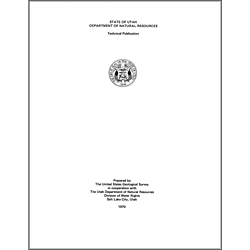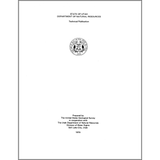Ground-Water Conditions in the Navajo Sandstone in the Central Virgin River Basin, Utah (TP-61)
By: R. M. Cordova
The central Virgin River basin, Utah, includes about 1,000 square miles in the drainage basin of the Virgin River downstream from the Hurricane Cliffs. The Navajo Sandstone crops out in 234 square miles of the basin and underlies younger rocks in about 450 square miles of the basin. Lithologically, the Navajo Sandstone is essentially a quartzose sandstone, about 2,000 feet in maximum thickness, comprising three distinct units denominated the lower, middle, and upper units. The Navajo is practically homogeneous in size and sorting of its grains.
The increased need for water in southern Utah for municipal and industrial purposes has prompted water users to look to the ground-water reservoir for additional supplies. Experience gained by water-well users during the exploration for water supplies indicated that the Navajo Sandstone was a source of ground water that had a greater promise for large yields and good quality water than any other consolidated-rock formation. However, little basic hydrologic data and no overall hydrologic evaluation of the formation were available to aid the Utah State Engineer in determining whether large-scale development would be feasible. Consequently, the State Engineer requested the U.S. Geological Survey, as part of the Statewide cooperative agreement with the Utah Department of Natural Resources, to make a study of the hydrogeology of the Navajo Sandstone in the central Virgin River basin where wells in the formation are more numerous than in other places.
Other Information:
Published: 1978
Pages: 66 p.
Plates: 1 pl.
Location: Washington County
Media Type: Paper Publication







